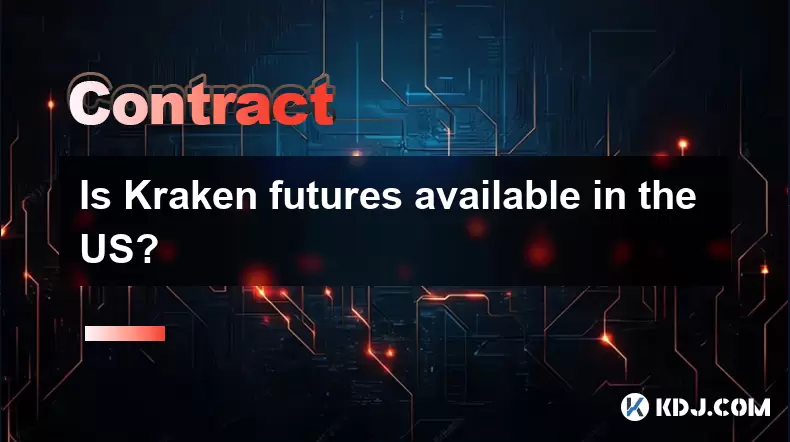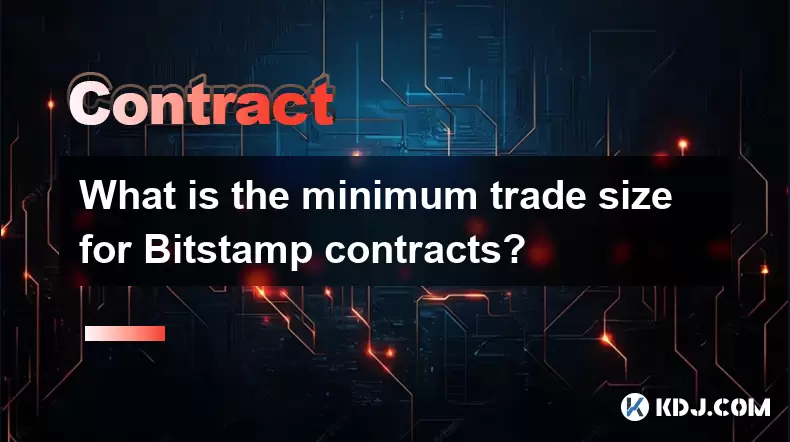-
 Bitcoin
Bitcoin $118600
-1.19% -
 Ethereum
Ethereum $3633
-2.99% -
 XRP
XRP $3.191
-10.14% -
 Tether USDt
Tether USDt $1.000
0.01% -
 BNB
BNB $776.1
-1.34% -
 Solana
Solana $189.7
-7.51% -
 USDC
USDC $0.0000
0.02% -
 Dogecoin
Dogecoin $0.2413
-10.49% -
 TRON
TRON $0.3099
-1.92% -
 Cardano
Cardano $0.8182
-9.31% -
 Hyperliquid
Hyperliquid $43.77
-4.82% -
 Stellar
Stellar $0.4286
-9.27% -
 Sui
Sui $3.717
-7.35% -
 Chainlink
Chainlink $18.22
-7.31% -
 Hedera
Hedera $0.2465
-9.91% -
 Bitcoin Cash
Bitcoin Cash $512.4
-2.64% -
 Avalanche
Avalanche $23.98
-6.82% -
 Litecoin
Litecoin $112.5
-5.53% -
 UNUS SED LEO
UNUS SED LEO $8.969
-0.24% -
 Shiba Inu
Shiba Inu $0.00001388
-10.11% -
 Toncoin
Toncoin $3.194
-4.31% -
 Ethena USDe
Ethena USDe $1.001
0.00% -
 Polkadot
Polkadot $4.128
-8.96% -
 Uniswap
Uniswap $10.19
-5.28% -
 Monero
Monero $313.7
-2.80% -
 Bitget Token
Bitget Token $4.712
-2.96% -
 Dai
Dai $0.0000
0.01% -
 Pepe
Pepe $0.00001275
-9.75% -
 Aave
Aave $291.4
-6.25% -
 Bittensor
Bittensor $426.7
-5.38%
Is Kraken futures available in the US?
Kraken Futures is a CFTC-registered platform offering leveraged crypto derivatives to eligible U.S. residents, subject to state regulations and strict KYC/AML checks.
Jul 23, 2025 at 12:43 am

Understanding Kraken Futures and Regulatory Framework
Kraken Futures, a derivatives trading platform operated by the cryptocurrency exchange Kraken, enables users to trade perpetual futures contracts on various digital assets. These include Bitcoin (BTC), Ethereum (ETH), and other major cryptocurrencies. Unlike spot trading, futures allow traders to speculate on price movements using leverage, which can amplify both gains and losses. However, the availability of Kraken Futures in the United States is heavily influenced by regulatory oversight, particularly from the Commodity Futures Trading Commission (CFTC). The CFTC regulates all futures and options markets in the U.S., including those involving digital commodities.
Cryptocurrency derivatives are classified as commodity futures under U.S. law, meaning any platform offering such products must be registered with the CFTC as a Designated Contract Market (DCM) or operate under appropriate exemptions. Kraken Futures operates through Kraken Futures LLC, which is a CFTC-registered DCM. This registration allows it to legally offer futures trading services to eligible U.S. residents. Not every state permits access, and certain restrictions apply based on individual financial regulations at the state level.
Eligibility for U.S. Residents to Access Kraken Futures
While Kraken Futures is available to many U.S. residents, not all individuals can participate. Eligibility depends on several factors, including geographic location within the U.S., compliance with Know Your Customer (KYC) procedures, and adherence to Anti-Money Laundering (AML) standards. Users must complete identity verification, provide proof of address, and undergo financial suitability assessments before gaining access to leveraged trading.
Residents of states such as New York and Washington may face limitations due to stricter local financial regulations. For example:
- Users must confirm they are not residents of prohibited jurisdictions.
- They must pass a risk disclosure acknowledgment process.
- They need to demonstrate an understanding of leveraged trading risks.
- They must link a verified funding source, such as a bank account or cryptocurrency wallet.
Only after fulfilling these conditions can a user activate futures trading on their Kraken account. The platform uses geolocation technology and IP address checks to enforce regional restrictions automatically.
How to Enable Kraken Futures for U.S. Traders
Enabling Kraken Futures involves a multi-step verification and activation process. U.S.-based users who meet the basic eligibility criteria must follow these steps carefully:
- Log into your Kraken account and navigate to the "Funding" tab.
- Select "Trading terminals" and choose Kraken Futures from the list.
- Click "Get started" and agree to the terms and risk disclosures.
- Complete the enhanced identity verification if not already done, which includes submitting government-issued ID and a selfie.
- Answer suitability questions about investment experience, income level, and risk tolerance.
- Wait for approval, which typically takes 24 to 72 hours.
- Once approved, deposit funds into your futures wallet via bank transfer or crypto transfer.
After funding, users can begin trading perpetual futures contracts with available leverage tiers, which vary by asset and position size. It is critical to review margin requirements and liquidation thresholds before opening positions.
Differences Between Kraken Spot and Kraken Futures Platforms
Kraken operates two distinct trading environments: the standard Kraken spot exchange and the separate Kraken Futures platform. While both are accessible under the same account umbrella, they function independently with different interfaces, fee structures, and risk profiles.
Key distinctions include:
- Separate wallets: Funds must be manually transferred between spot and futures accounts.
- Leverage availability: Spot trading does not support leverage; futures allow up to 50x depending on the contract.
- Order types: Futures offer advanced order types like take-profit and stop-loss triggers, which are not natively supported in spot trading.
- Settlement mechanisms: Futures contracts are settled in the base cryptocurrency (e.g., BTC/USD settles in BTC), whereas spot trades settle immediately in the traded asset.
- Fee model: Futures use a maker-taker pricing model with lower fees for market makers, while spot fees are tiered based on 30-day trading volume.
Users should understand that losses in futures trading can exceed deposited collateral due to leverage, a risk absent in spot transactions.
Compliance and Risk Management Features on Kraken Futures
To align with U.S. regulatory expectations, Kraken Futures implements robust compliance and risk mitigation systems. These include real-time monitoring of trading activity, automated liquidation engines, and strict margin enforcement protocols.
Important safeguards include:
- Initial and maintenance margin requirements clearly displayed before entering a position.
- Auto-deleveraging protection to prevent systemic risk during extreme volatility.
- Insurance fund contributions derived from liquidated positions to cover clawbacks.
- Daily settlement reports accessible to users for tax and audit purposes.
- Two-factor authentication (2FA) and withdrawal safelists to prevent unauthorized access.
The platform also provides educational resources, including interactive tutorials and risk calculators, to help users assess potential outcomes before placing trades. These tools emphasize transparency and informed decision-making, which are essential for regulated derivatives trading.
Frequently Asked Questions
Can I trade Kraken Futures on mobile?
Yes, Kraken offers a mobile application for iOS and Android that supports full access to Kraken Futures. Users can monitor positions, adjust leverage, set stop-loss orders, and close trades directly from the app. Real-time P&L tracking and push notifications for margin calls are included features.
Are there minimum deposit requirements for Kraken Futures?
There is no fixed minimum deposit to open a futures account. However, users must deposit enough funds to meet the initial margin requirement of their intended trade. For example, opening a $1,000 position in BTC/USD with 10x leverage requires at least $100 in collateral.
How are taxes handled on Kraken Futures trades?
Kraken generates annual tax reports that include futures trading activity. Each realized gain or loss from closing a futures position is treated as a taxable event under IRS guidelines. Users can download CSV files detailing all transactions for import into tax software or sharing with accountants.
Does Kraken Futures support stop-limit orders?
Yes, Kraken Futures supports multiple conditional order types, including stop-market, stop-limit, take-profit, and trailing stops. These can be configured when placing a new order through the web or mobile interface, allowing precise control over entry and exit points.
Disclaimer:info@kdj.com
The information provided is not trading advice. kdj.com does not assume any responsibility for any investments made based on the information provided in this article. Cryptocurrencies are highly volatile and it is highly recommended that you invest with caution after thorough research!
If you believe that the content used on this website infringes your copyright, please contact us immediately (info@kdj.com) and we will delete it promptly.
- Score Big This Season with the BetMGM Bonus Code: Your Ticket to MLB Bonus Bets!
- 2025-07-24 06:50:12
- Bitcoin: From Digital Gold Rush to Evolving Asset Class
- 2025-07-24 06:50:12
- Bitcoin, Lightning Network, and Block Inc.: A New York Minute on Crypto's Mainstream Moment
- 2025-07-24 07:10:12
- PUMP Token: No Airdrop, But What's the Plan?
- 2025-07-24 07:10:12
- Asymmetric Shifts, Investor Losses, and Bold Strategies in Crypto: A New Era?
- 2025-07-24 07:15:12
- Crypto Trading 2025: AI Analytics, Binance Fees, and the Rise of Utility Tokens
- 2025-07-24 07:15:12
Related knowledge

Why is my Bitstamp futures position being liquidated?
Jul 23,2025 at 11:08am
Understanding Futures Liquidation on BitstampFutures trading on Bitstamp involves borrowing funds to open leveraged positions, which amplifies both po...

Does Bitstamp offer inverse contracts?
Jul 23,2025 at 01:28pm
Understanding Inverse Contracts in Cryptocurrency TradingIn the realm of cryptocurrency derivatives, inverse contracts are a specific type of futures ...

How to find your Bitstamp futures trade history?
Jul 23,2025 at 08:07am
Understanding Bitstamp and Futures Trading AvailabilityAs of the current state of Bitstamp’s service offerings, it is critical to clarify that Bitstam...

Can I use a trailing stop on Bitstamp futures?
Jul 23,2025 at 01:42pm
Understanding Trailing Stops in Cryptocurrency TradingA trailing stop is a dynamic type of stop-loss order that adjusts automatically as the price of ...

What is the minimum trade size for Bitstamp contracts?
Jul 23,2025 at 07:14pm
Understanding Bitstamp and Its Contract OfferingsBitstamp is one of the longest-standing cryptocurrency exchanges, established in 2011, and known for ...

How to trade ETH perpetuals on Bitstamp?
Jul 23,2025 at 03:28am
Understanding ETH Perpetual ContractsETH perpetual contracts are derivative products that allow traders to speculate on the price of Ethereum without ...

Why is my Bitstamp futures position being liquidated?
Jul 23,2025 at 11:08am
Understanding Futures Liquidation on BitstampFutures trading on Bitstamp involves borrowing funds to open leveraged positions, which amplifies both po...

Does Bitstamp offer inverse contracts?
Jul 23,2025 at 01:28pm
Understanding Inverse Contracts in Cryptocurrency TradingIn the realm of cryptocurrency derivatives, inverse contracts are a specific type of futures ...

How to find your Bitstamp futures trade history?
Jul 23,2025 at 08:07am
Understanding Bitstamp and Futures Trading AvailabilityAs of the current state of Bitstamp’s service offerings, it is critical to clarify that Bitstam...

Can I use a trailing stop on Bitstamp futures?
Jul 23,2025 at 01:42pm
Understanding Trailing Stops in Cryptocurrency TradingA trailing stop is a dynamic type of stop-loss order that adjusts automatically as the price of ...

What is the minimum trade size for Bitstamp contracts?
Jul 23,2025 at 07:14pm
Understanding Bitstamp and Its Contract OfferingsBitstamp is one of the longest-standing cryptocurrency exchanges, established in 2011, and known for ...

How to trade ETH perpetuals on Bitstamp?
Jul 23,2025 at 03:28am
Understanding ETH Perpetual ContractsETH perpetual contracts are derivative products that allow traders to speculate on the price of Ethereum without ...
See all articles

























































































